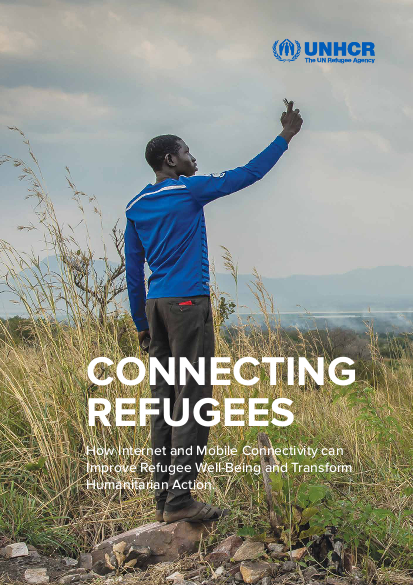
The digital revolution is transforming the world but refugees are being left behind. Today, almost 60 million forcibly displaced refugees and internally displaced persons are living without reliable internet and mobile connectivity.
Having to live offline means that contact and communication with loved ones is difficult and often impossible. Without access to up-to-date information on events back in their home countries as well as in their countries of asylum, refugees cannot access basic services such as health and education or make informed decisions on how to start improving their lives. A lack of connectivity constrains the capacity of refugee communities to organize and empower themselves, cutting off the path to self-reliance. But it also constrains the kind of transformative innovation in humanitarian assistance at a time when such a transformation has never been more necessary.
UNHCR believes we can do better. Through creative partnerships and smart investments, UNHCR aims to ensure that all refugees, and the communities that host them, are connected to mobile networks and the internet so that they can leverage these technologies to improve their lives. UNHCR recognizes it cannot create a connected refugee population on its own. Partnerships are key – between refugees and host communities, and between governments, civil society and the private sector. In particular, UNHCR is seeking to build strong, multi-faceted partnerships with the technology and telecommunications sectors to ensure that refugees can benefit from the digital revolution.
Our recently completed global assessment of this issue indicates that while seven per cent of refugee communities lack the requisite digital infrastructure for internet access and mobile communications, most refugees in urban areas live in places that have 2G or 3G mobile coverage. For those in rural areas, however, the situation is far worse, with 20 per cent living in areas with no connectivity. Our assessment has also found that refugees often spend up to a third of their disposable income on staying connected – highlighting the main obstacle to refugee connectivity: cost. Globally, refugees are 50 per cent less likely than the general population to have an internet-enabled phone, and 29 per cent of refugee households have no phone at all.
All this is a major barrier to innovation and transformative change in humanitarian action. A connected refugee population would unleash innovation in areas such as communicating with displaced persons, responding to their security needs, and getting humanitarian services to them. It would improve their lives and transform humanitarian operations.
The digital revolution is more than 25 years old. It is shocking we didn’t do this before. Now is the time to start.